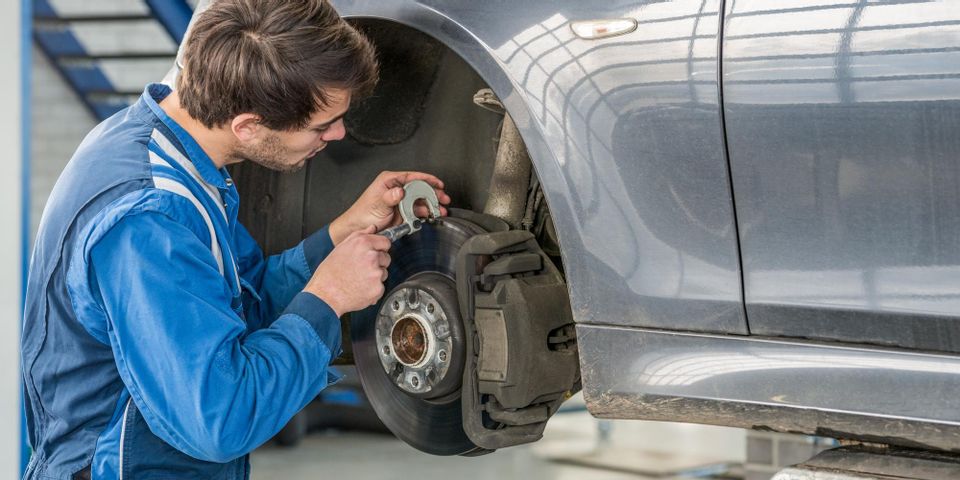3 Types of Braking Systems & How They Keep You Safe

Brakes are among the essential safety features of any vehicle, so it’s critical to have a functional set whenever you head out on the road. But did you know that you have more than one braking system in your car to keep you safe? To understand which kind of brake needs your attention, consult the guide below to get you started.
What Are the Types of Brakes in Your Car?
1. Service Brakes
All vehicles are equipped with service brakes, and they work to stop the automobile while it’s in motion. They come in two kinds, disc, and drum brakes.
Disc braking systems are comprised of the rotor, caliper, and brake pads. The caliper holds the pads outside the rotor, which is attached to the wheel. When hydraulic pressure is applied, the caliper squeezes the pads and pushes them against the rotor, resulting in a stopping motion.
The drum braking system is made up of a brake drum, shoes, a wheel cylinder, and springs. The drum is attached to the wheel’s interior and contains the brake shoes. Whenever pressure is applied, the brake shoes press against the drum and produce friction that causes the car to decelerate and stop.
Most modern vehicles have a hydraulic braking system, which runs on brake fluid, cylinders, and friction. When hydraulic pressure is applied, it creates the friction that stops the wheels from turning. It’s similar to the frictional braking system but differs because of the hydraulics. Some vehicles come with a servo braking system, which is a vacuum-assisted brake that augments stopping capacity. Hybrid and late-model vehicles have an electromagnetic system wherein the brakes need an electric motor to bring the car to a halt.
2. Emergency Brakes
 Also known as the parking brake, an emergency braking system is different altogether. It is independent of the service brakes and is often engaged to keep the vehicle stationary when parked. Whether it’s operated by a stick lever, push-button, or third pedal, it works under a mechanical system. A cable applies mechanical pressure to the wheels, causing both rear wheels to stop. It can also be used to stop the vehicle when service brakes suddenly fail.
Also known as the parking brake, an emergency braking system is different altogether. It is independent of the service brakes and is often engaged to keep the vehicle stationary when parked. Whether it’s operated by a stick lever, push-button, or third pedal, it works under a mechanical system. A cable applies mechanical pressure to the wheels, causing both rear wheels to stop. It can also be used to stop the vehicle when service brakes suddenly fail.
3. Anti-Lock Braking System (ABS)
Some don’t consider ABS a type of brake, but a safety feature of newer vehicles on the market. Although it doesn’t stop the car entirely, it prevents the wheels from locking up when the brakes are suddenly applied. In doing so, it keeps the vehicle from skidding and spinning out of control during slick, wet conditions.
The braking systems in your car keep you safe on the road. If you run into problems with them, bring your vehicle to Dee’s Auto Care Specialists. With locations in La Crosse and Onalaska, WI, and Winona, MN, they’ve provided a range of auto repair services covering engines, brakes, tires, and transmissions since 1936. Call (608) 782-2530 to set an auto maintenance appointment or learn more about their services online.
About the Business
(5 reviews)
Have a question? Ask the experts!
Send your question

